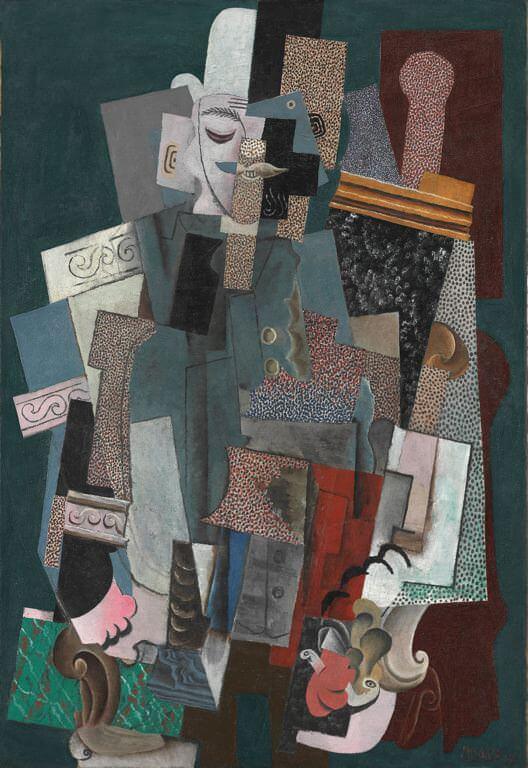Man with a Pipe, 1915 by Pablo Picasso
The year 1915 was a somber one, with the impact of World War One being felt in France and most men joining up, including Georges Braque, who was seriously injured, and fellow painter Andre Derain (1880-1954). Picasso was viewed with suspicion by contemporary society as he was young and healthy yet did not go to fight; in fact he demonstrated considerable ambivalence in his attitude to the war, especially with his obvious close connections to his main art dealer, the Paris-based German, Daniel-Henry Kahnweiler.
However, this large canvas, 130 x 90 cm (52 x 36 in), has a quiet humor and feeling of composure. The use of Pointillist-style dots, with their stippled effect and the inclusion of a painted marble-effect herald Picasso's return to color exploration and his interest in the development of interior design processes. The incorporation of frieze-like techniques, with areas of architectural scrolling, creates a sense of movement to oppose the tension of the solid piling up of the angular blocks. These techniques also connote the curling of smoke from the pipe in the bottom right of the picture. The experimental return to Naturalism filters through in this painting with the half-figurative face, hands and waistcoat fragment, though with comic intent. The artist's sense of humor is apparent in the jigsaw compilations of the face, whose bizarre, textured overlays create the nose, mustache and mouth so that a bird-shape appears. Picasso was moving away from Cubism, as seen in Man with a Guitar (1911). Surrealism was beckoning.





















